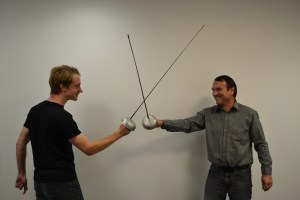
Sophie Henrot-Versillé and Florent Robinet are research associates at the Laboratoire de l’Accélérateur Linéaire d’Orsay
Many cosmological models predict the existence of a stochastic Gravitational-Wave (GW) background produced just after the universe was born. As gravitational waves do not interact with matter, their detection would give us a unique and pristine probe to study the very first instants of the Universe: when it was 50 orders of magnitude younger than its age at the epoch of the photon decoupling. Such a detection would be as important as the discovery of the Cosmological Microwave Background (CMB). CMB studies tell us what the universe looked like when it became optically thin (~300,000 years after the Big Bang). They help us to establish the standard ΛCDM model of cosmology and to understand the important role of inflation. Continue reading





You must be logged in to post a comment.